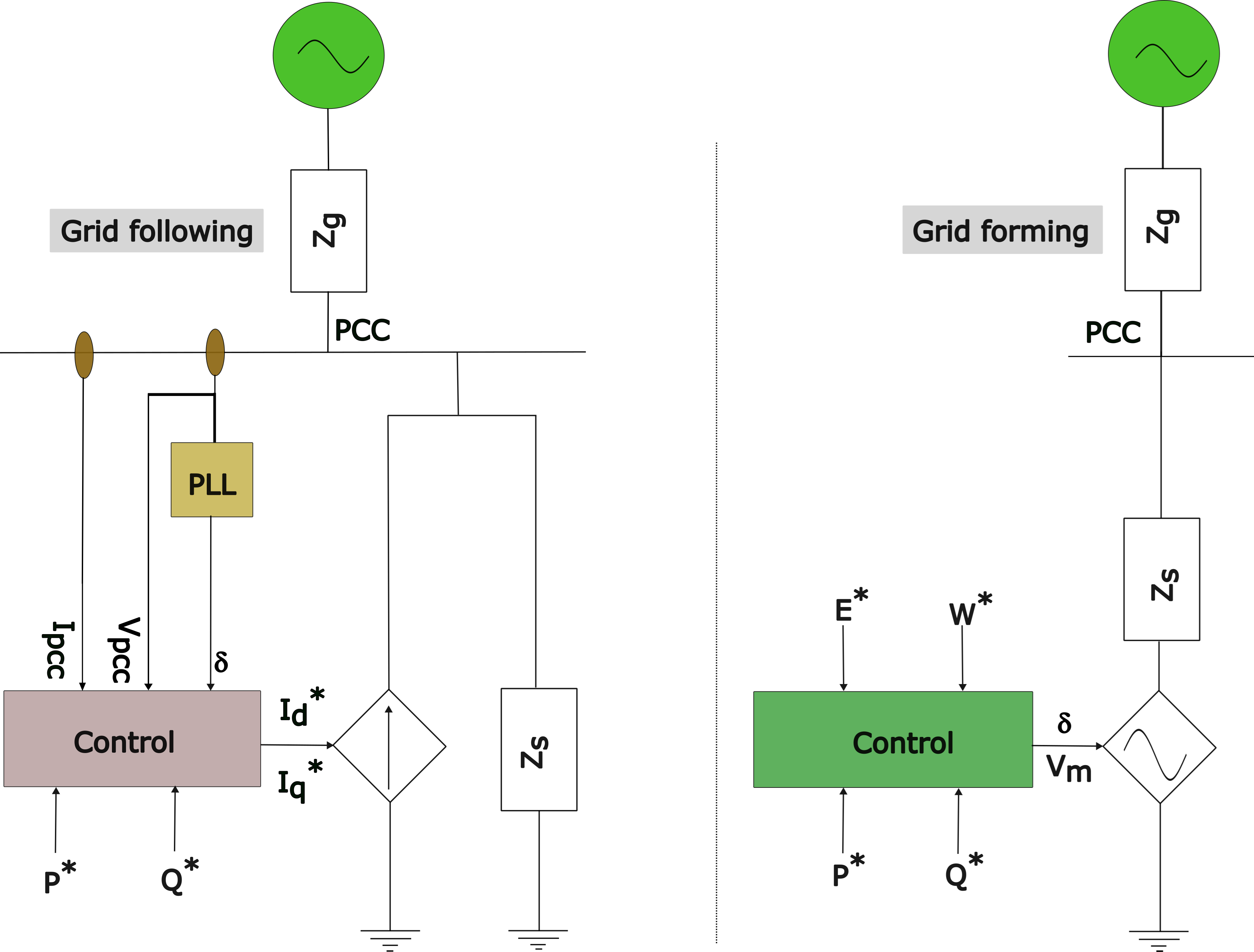Power electronics dominated grid

Fig 1. Illustration of lack of inertia in an IBR-dominated grid.
In grids dominated by synchronous generators, the rotating mass of synchronous generators opposes any sudden change in grid frequency from its steady-state value by releasing stored kinetic energy to the grid. However, most renewable energy sources don’t have rotating mass, and as they are decoupled from the grid through power electronic converters, supplying transient power to the grid to maintain grid frequency becomes a concern. Another issue with the inverter interface is the limitation in providing fault current as provided by conventional synchronous machines. These factors result in reduced grid stability, as illustrated in Fig. 1.
Most of the inverter-based energy sources installed across the world today use phase-locked loops (PLLs), which depend on externally generated voltages from synchronous machines for their operation. These inverters are classified as grid-following converters, and they currently dominate the IBR fleet in power systems across the world. If there is any grid voltage distortion due to power system disturbance like transmission line fault, generation, or load loss, these inverters may lose synchronism and cease to transfer power. Hence, their capabilities are limited due to their heavy reliance on a stable grid reference for smooth operation.

Fig 2. Grid forming versus Grid following converter.
There has been a surge in research activities in academia and industry to explore how IBRs can maintain system security and stability in grids. If some of the IBR-based units can emulate the performance of synchronous machines, then the stability of the inverter-dominated grid will improve. The grid-forming converter, which emulates the synchronous generator, is the subject of ongoing study in this area and has emerged as the most promising solution to these challenges. However, they are still in the early stages of development. It has been demonstrated that a grid-forming inverter, when combined with a reliable energy source, can provide essential system services to some extent, including fast frequency response and system strength.
Multilevel converters with capacitors (such as MMC, Cascaded Multilevel, etc.) could also provide fast frequency response. The energy stored in the capacitors of the multilevel converters could be used for a transient period to inject power into the grid. However, doing the same may result in the collapse of DC voltage. The control schemes for the operation of the multilevel converters with reduced voltage and then ramping the DC voltage gradually (by taking back the energy from the grid) and the associated challenges are research areas.
Some of the interesting areas of research in power electronics dominated grids are:
| [1] |
Grid forming converters |
| [2] |
Fast frequency response from multilevel converters. |
| [3] |
E-STATCOM for Power System Performance Enhancement |
I am looking for motivated students with a strong academic background in power electronics, excellent analytical and problem-solving skills, and a passion for research. Previous research experience is not essential , but a willingness to learn , work hard and contribute is expected. Interested students may reach out to me. Email Me.